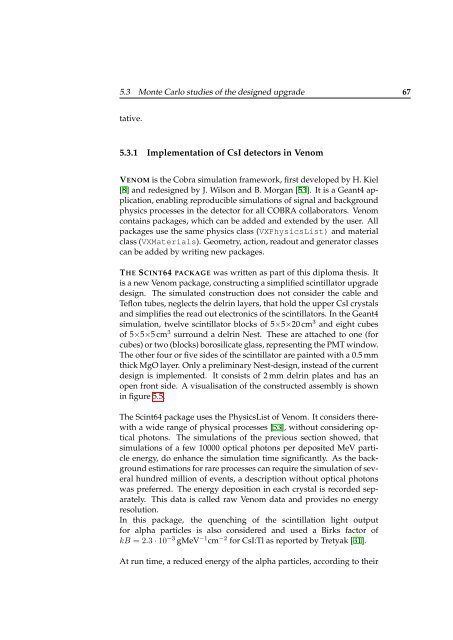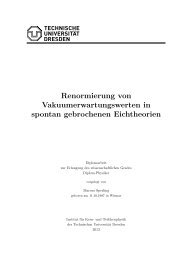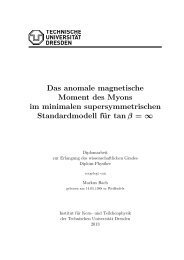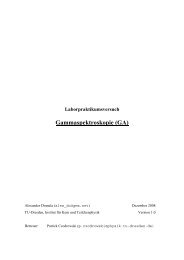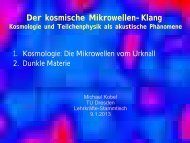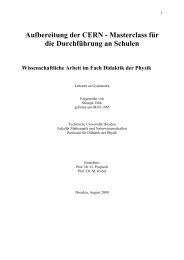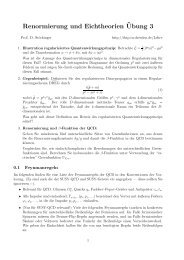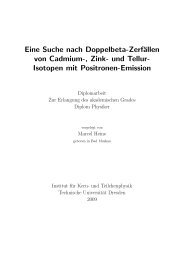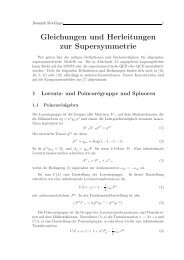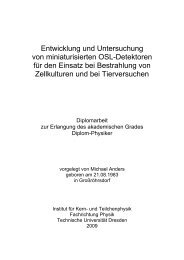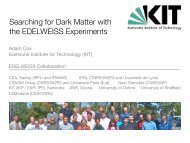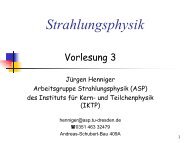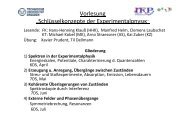a design study for a cobra upgrade to - Institut für Kern- und ...
a design study for a cobra upgrade to - Institut für Kern- und ...
a design study for a cobra upgrade to - Institut für Kern- und ...
You also want an ePaper? Increase the reach of your titles
YUMPU automatically turns print PDFs into web optimized ePapers that Google loves.
5.3 Monte Carlo studies of the <strong>design</strong>ed <strong>upgrade</strong> 67<br />
tative.<br />
5.3.1 Implementation of CsI detec<strong>to</strong>rs in Venom<br />
VENOM is the Cobra simulation framework, first developed by H. Kiel<br />
[8] and re<strong>design</strong>ed by J. Wilson and B. Morgan [53]. It is a Geant4 application,<br />
enabling reproducible simulations of signal and backgro<strong>und</strong><br />
physics processes in the detec<strong>to</strong>r <strong>for</strong> all COBRA collabora<strong>to</strong>rs. Venom<br />
contains packages, which can be added and extended by the user. All<br />
packages use the same physics class (VXPhysicsList) and material<br />
class (VXMaterials). Geometry, action, readout and genera<strong>to</strong>r classes<br />
can be added by writing new packages.<br />
THE SCINT64 PACKAGE was written as part of this diploma thesis. It<br />
is a new Venom package, constructing a simplified scintilla<strong>to</strong>r <strong>upgrade</strong><br />
<strong>design</strong>. The simulated construction does not consider the cable and<br />
Teflon tubes, neglects the delrin layers, that hold the upper CsI crystals<br />
and simplifies the read out electronics of the scintilla<strong>to</strong>rs. In the Geant4<br />
simulation, twelve scintilla<strong>to</strong>r blocks of 5×5×20 cm 3 and eight cubes<br />
of 5×5×5 cm 3 surro<strong>und</strong> a delrin Nest. These are attached <strong>to</strong> one (<strong>for</strong><br />
cubes) or two (blocks) borosilicate glass, representing the PMT window.<br />
The other four or five sides of the scintilla<strong>to</strong>r are painted with a 0.5 mm<br />
thick MgO layer. Only a preliminary Nest-<strong>design</strong>, instead of the current<br />
<strong>design</strong> is implemented. It consists of 2 mm delrin plates and has an<br />
open front side. A visualisation of the constructed assembly is shown<br />
in figure 5.5.<br />
The Scint64 package uses the PhysicsList of Venom. It considers therewith<br />
a wide range of physical processes [53], without considering optical<br />
pho<strong>to</strong>ns. The simulations of the previous section showed, that<br />
simulations of a few 10000 optical pho<strong>to</strong>ns per deposited MeV particle<br />
energy, do enhance the simulation time significantly. As the backgro<strong>und</strong><br />
estimations <strong>for</strong> rare processes can require the simulation of several<br />
h<strong>und</strong>red million of events, a description without optical pho<strong>to</strong>ns<br />
was preferred. The energy deposition in each crystal is recorded separately.<br />
This data is called raw Venom data and provides no energy<br />
resolution.<br />
In this package, the quenching of the scintillation light output<br />
<strong>for</strong> alpha particles is also considered and used a Birks fac<strong>to</strong>r of<br />
kB = 2.3 · 10 −3 gMeV −1 cm −2 <strong>for</strong> CsI:Tl as reported by Tretyak [31].<br />
At run time, a reduced energy of the alpha particles, according <strong>to</strong> their


